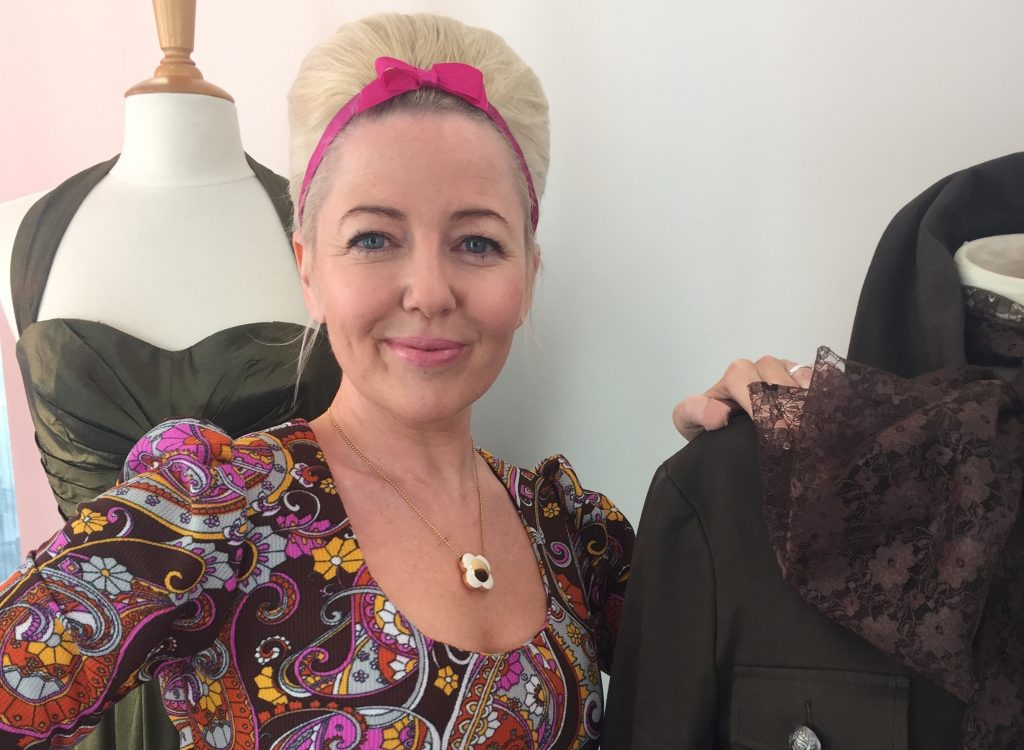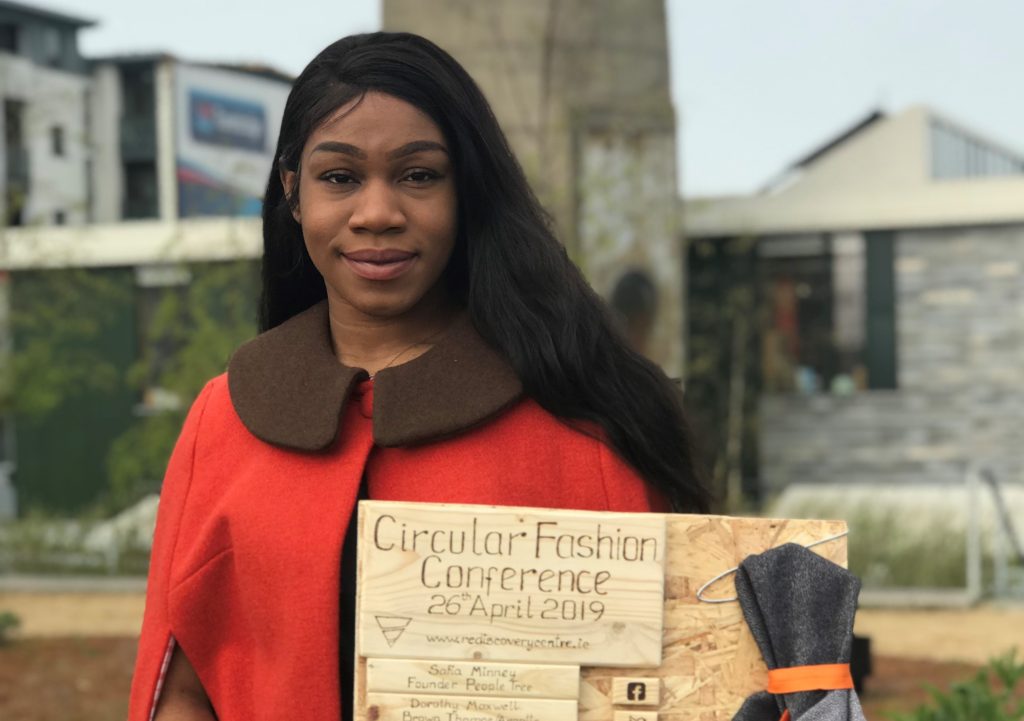Circular style: Reaction to the true cost of fast fashion

May 3rd, 2019
In her third year at Cork Institute of Technology, Aishling McCormack came across a student promoting sustainable fashion in a hallway.
“She explained that she was with Nu Wardrobe, a female-led platform that wants to redefine what people thought about fashion,” she remembers.
For McCormack, redefining how we understand fashion wasn’t a totally new concept. The previous year she took part in a clothes swap in the city.
A self-described bargain hunter, she has sifted through items at second-hand clothing stores and thrift shops around the country.
A clothes swap was a natural addition to her shopping habit. But at the time, she didn’t realize that she was an active slow fashion participant.
That is until someone from Nu Wardrobe told her to come along that night to a screening of True Cost, a documentary revealing the human and land exploitative practices of the fast fashion industry.
The documentary, McCormack says, completely changed the way she thought and felt about where her clothes came from. “What shocked me the most initially is that the fashion industry leans towards slavery,” she says.
“It deprives people of basic income, families are broken, mothers don’t earn enough for kids to go to school, and they work in terrible conditions,” she continues.
The more McCormack watched and researched, the more unsettled she became about the human and environmental cost. And so she wanted to act.
She became directly involved in sustainable fashion, taking on a Nu Wardrobe ambassadorship for her final year of study. She shops primarily second-hand and uses a number of apps to determine how sustainable a given brand is.
And as awareness grows globally around the human and environmental cost of fast fashion, more and more consumers are taking a more sustainable approach to their shopping routine.
Fast Fashion
The term fast fashion – increasingly used by the media and in awareness campaigns – refers to cheap clothing produced en masse.
In the last 15 years, clothing production has approximately doubled due to the phenomenon, according to a report by the Ellen MacArthur Foundation.
“We’ve created a mind-set that’s so disposable,” says Carrie-Ann Moran, fashion manager at the Rediscovery Centre in Ballymun.
“Items are then not made for longevity. Producers are using more synthetically blended fibres that can fall apart more easily. It’s much cheaper to do that,” she says.
Synthetic fibres, including polyester and nylon, are made with petroleum and take a considerable amount of time to break down once disposed of.
The fashion and textile industry are also dependent on other non-renewable resources such as dyeing agents and cotton fertilizers.
Production from textile production alone, the Ellen MacArthur report finds, results in 1.2 billion tonnes of greenhouse gas emissions per year, exceeding those of international aviation and maritime shipping combined.
Upkeep of clothing also poses an environmental challenge as some garments release plastic microfibers when washed, releasing half a million tonnes of little pieces of plastic into the ocean every year.
Water consumption in clothes production also poses its own problem.
The production of one t-shirt requires 2,700 litres of water according to Greenpeace. On average, that’s the equivalent amount of water one person drinks over the course of 900 days.
And in terms of usage, the number of times a garment is worn is on the decline, estimated to be down 36 per cent in the past 15 years.
“I think the fashion industry has done an amazing job with keeping their secret hidden,” says Moran.
“It’s not like you’re walking into a store and they’re going to tell you the extent of what they do. They want guilt-free consumers,” she says.
But thankfully, Moran finds, a lot of brands are changing their production and sales practices. “It’s not an overnight revolution, but there is a massive change occurring.”
And it’s a change that can be seen on many tiers.

Fashion Industry Charter
Launched at COP24 in Poland last year, the Fashion Industry Charter for Climate Action attempts to address the issue through international coordination.
The charter aims to achieve net-zero emissions within the industry by 2050 and includes a 30 percent greenhouse gas reduction target for 2030.
“I want to call on my peers in the business, from other brands to retailers and suppliers, to sign up to this charter now and take the necessary actions to address the reality of the issue of climate change in their business and value chains,” fashion designer Stella McCartney said at the launch.
“Collectively we have a voice and the capacity to make a difference,” she added. And it would appear high street retailers and suppliers have indicated their willingness to step up.
This is a key step according to Irish stylist Courtney Smith, who spoke at Ireland’s first Circular Fashion Conference last month.
“If you want real change, you want to get on board with the high street and encourage them, because the majority of people buy their clothes there,” she says.

Circular Fashion Conference
Smith referred to high street campaigns to reduce the industry’s environmental impact such as Zara’s Join Life initiative that promotes both sustainable collections and allows customers to recycle garments they no longer wear in-store.
Another high street effort Ms Smith highlights is H&M’s Conscious campaign, a collection that uses 100 per cent organic cotton, Tencel or recycled polyester.
Sustainability Director at Brown Thomas Dorothy Maxwell also emphasized at the conference that Irish consumers are “increasingly conscious” and the growth of ethical products and the resale market is a testament to this.
“The urgency of what we need to [address climate change] is front and centre all the time,” she stressed in her presentation.
And for many, such urgency within an array of elements of fashion – including production, product care and disposable – can feel overwhelming.
Moran often encounters this with young designers she comes across and advises designers to start off with one sustainable element.
“Pick one at the moment that’s important to you. Whether that’s using organic materials, using reusable materials, or making sure the product is ethically made,” she advises.
Then, she says, “things will snowball naturally”.
[x_author title=”About the Author”]







